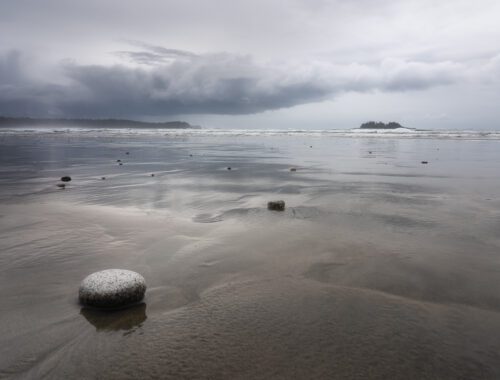
The Artistic Dilemma: Grand Landscapes vs. Tranquil Close-ups

Recently, my fascination with intimate scenes has grown, partly thanks to a project that involved capturing clouds through a telephoto lens. A moment of extraordinary light had me reaching for my wide-angle lens to freeze it in time.
The Evolution of Photographic Preferences
As we tread the path of photography, our aesthetic inclinations start veering towards specific styles. This shift may be spontaneous or deliberate. Perhaps it’s the color palette we’re drawn to, the aspect ratio we prefer, our choice of focal length, or the subjects that catch our eye. In photography parlance, “epic landscapes” usually refer to wide shots comprising distinct foregrounds, middlegrounds, and backgrounds, captured in the ethereal glow of sunset or sunrise. “Intimate scenes“, on the other hand, are characterized by longer focal lengths, more abstract compositions, and fewer objects. Neither style can be declared superior; they merely evoke different emotional responses from viewers.
With experience, most photographers find themselves drawn to one style. Some start with epic shots and gradually develop an appreciation for intimate scenes. For others, the allure of grand vistas remains constant, while yet another group remains perpetually enamored by close-ups. But the dynamics of landscape photography are driven not just by artistic preference but also by the ebb and flow of our emotions.
How Emotions Influence Your Frames
We humans are susceptible to a gamut of emotions – excitement, ennui, stress, tranquility, and more. Each emotional state leaves an imprint on our photographs. At times, a breathtaking, expansive landscape might resonate so deeply with my excitement that I can’t resist capturing it in a wide shot. It’s akin to being at a concert, so moved by the music that I want to join in with the singer.
During other moments, the interplay of light and shadow on the landscape fills me with such passion that I feel compelled to capture its essence in my frame. And then, there are instances when the subtle details of nature – the unspoken dialogue between a leaf and a rock, for instance – become my entire universe, and I strive to encapsulate that in my photograph.
Even though I might have a preference, it never restricts me from exploring the other style. My camera instinctively gravitates towards what resonates with me in a landscape. However, summarily dismissing a scene with a statement like “there’s nothing worth photographing here” is a cardinal sin in my book. It’s a clear sign that I’m not truly present in the moment, lost instead in the labyrinth of thoughts within my head.
Frequently Asked Questions
- What are “epic landscapes” and “intimate scenes” in photography?
Epic landscapes usually refer to wide shots with distinct foreground, middle ground, and background, generally captured in sunrise or sunset light. Intimate scenes, on the other hand, involve longer focal lengths, more abstract compositions, and fewer objects. - Can emotions influence photography style?
Yes, emotions can significantly influence a photographer’s choice of style. Excitement, passion, tranquility – each emotion can lead to different kinds of compositions and subjects in photography. - Should photographers stick to one style?
Not necessarily. While photographers might develop a preference, it’s important to stay open and responsive to different styles and subjects that resonate with them.
Conclusion
The choice between grand landscapes and tranquil close-ups isn’t a question of superiority but of personal preference and emotional resonance. In photography, as in life, diversity and flexibility often lead to the most compelling narratives.




